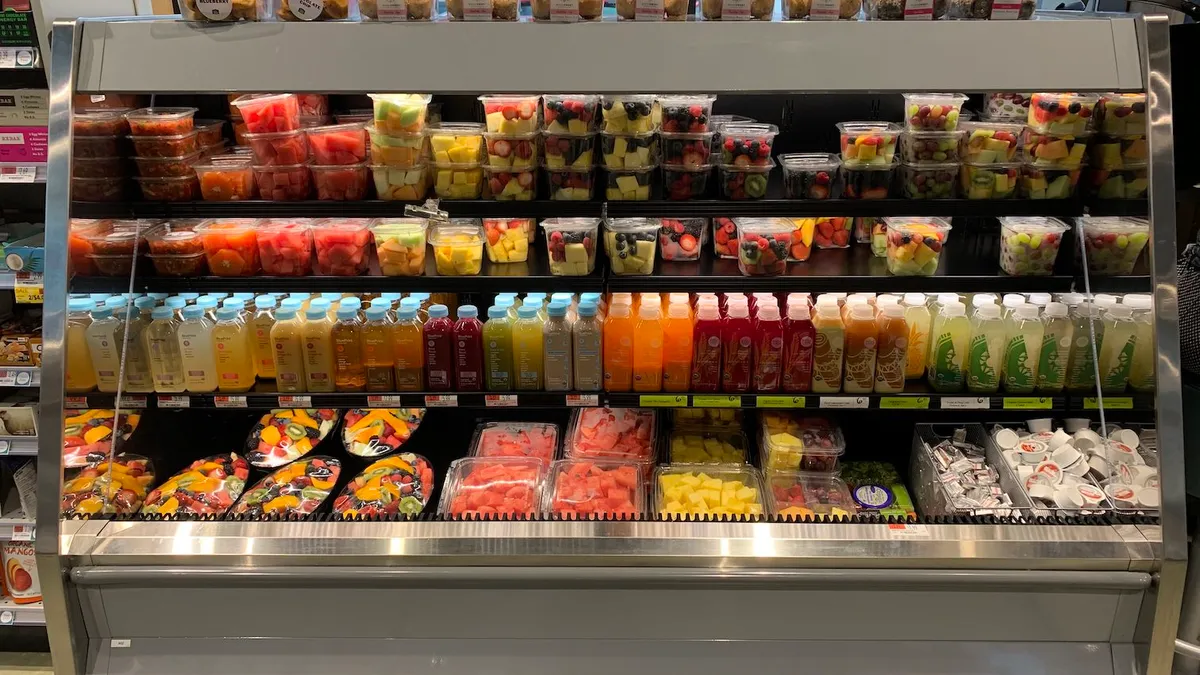Dive Brief:
- Whole Foods prices have dropped an average of 2.5% compared to last year according to a note from Morgan Stanley, CNBC reported.
- Parent company Amazon raised Whole Foods prices in February of this year citing increased packaging, ingredient and transportation costs as the reason. It then announced price cuts on hundreds of products in April.
- According to the note from Morgan Stanley, Whole Foods groceries now cost about 12% to 13% more than conventional grocers, down from 20%.
Dive Insight:
Though this round of reduced prices isn't a result of a formal announcement from the retailer, the latest findings from Morgan Stanley show that Amazon's ongoing attempt to lower prices at Whole Foods is starting to take hold.
Since its acquisition, Amazon has made incremental steps to help Whole Foods become more competitive with mainstream grocers. While chains like Kroger still have a more competitive price offering, other lower-priced natural grocers that compete with Whole Foods, such as Sprouts and Fresh Thyme Farmers Market, could face a bigger threat with Whole Food's continued price drop.
According to a recent Consumer Reports survey ranking grocery stores and supermarkets, Fresh Thyme, Sprouts and Natural Grocers are ranked higher than Whole Foods in categories like customer service, quality, and price. Overall, however, consumers seem to find organic offerings pricey, and none of these players earned a top spot for organic pricing.
Prime shoppers will reap the biggest benefits of Amazon's continued efforts to cut prices. The company remains heavily invested in driving Prime members to Whole Foods stores while also luring more shoppers into the program. With its price cuts at Whole Foods in April, it doubled the weekly discounts for Prime members, Amazon also offered members an entire week of deals and discounts during July's Prime day.
Consumers may be feeling whiplash from the up-and-down pricing that's occurred this year. While Whole Foods saw a 16.5% uptick in foot traffic at stores earlier this year, the number of new shoppers in the same timeframe dropped 2.5%. The company's bid to cut prices could encourage some customers to add a Prime membership or shop at Whole Foods more often, but the rollercoaster price ride that's characterized the store's pricing this year may keep some people at a distance.












